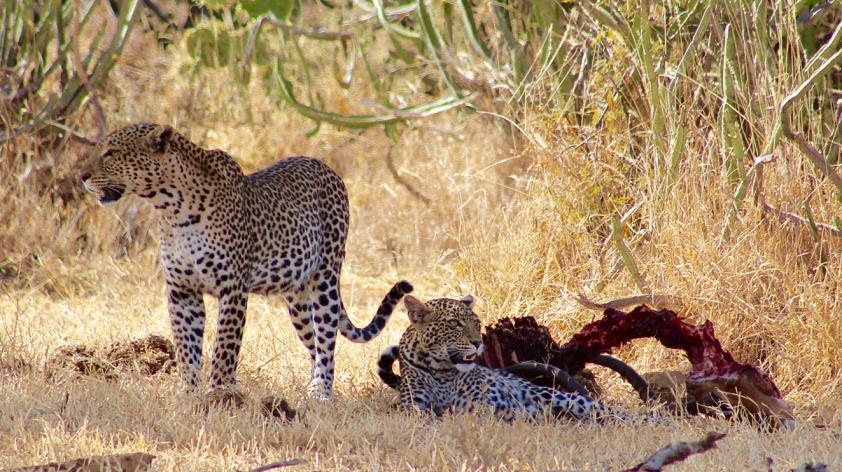
The Social Tolerance of Solitary Carnivores
With some notable exceptions (e.g. lions, hyenas, wolves, wild dogs and others), most large carnivores live a solitary existence. They hunt for food, raise young, and fend off rivals all on their own. This is true for two large carnivores I study: African leopards and polar bears.
It is already a rare sight when more than one individual of either of these species is found in the same location, even more so with multiple individuals. But it does happen. The circumstances for why it happens can be as interesting as the event itself.
For polar bears, the most common exception to the rule of solitary existence is around meal time, as long as one of two conditions is met: there’s no food at all or there’s an overabundance of food. When polar bears are forced onto land during the annual sea ice melt, very little food is available. As the refreeze draws nearer, bears will often congregate in the best areas to get back on the sea ice. The congregations along Hudson Bay, Canada are some of the most famous, and draw thousands of tourists every year.
An overabundance of food for polar bears usually comes in the form of whale carcasses that have washed ashore. These congregations can be massive (aka “a sleuth”). On Prince of Whales Island, Canada, I witnessed more than 40 polar bears all in the same small area due to the abundance of beluga whale carcasses. This past summer, reports came in of over 200 bears on Wrangel Island, all hoping to get a serving of whale.
For African leopard, these sorts of congregations are much rarer. However, this past February, I had the chance to experience a leopard congregation (aka “a leap”) around a kill site on Loisaba Conservancy, Kenya. A large male impala had been killed by an equally large male leopard, and once he had his fill, other leopards moved in for leftovers. In many cases, this tolerance for sharing food would not have been allowed by a dominant male still at the kill site; but in this circumstance, he was distracted by a female looking for a mate.
While the male consorted with the female within the privacy of some dense shrub, a mother and cub moved in on the leftovers. They were extremely relaxed around the kill, recognizing that the adult male was not a threat. Four leopards in a such a tight setting was a surprise and was only surpassed when the next morning a fifth leopard showed up to work on some of the last scraps high in a Boscia tree. The fact that the fifth leopard showed up so quickly likely meant she was in the vicinity when the kill happened the day before.
For all of these cases, this social tolerance shows us that there are no hard and fast rules to animal behaviour and that even the most intimidating of species can give space.
Watch a video here. A young subadult female hoists the remains of the impala carcass high into the tree to feed on the leftovers. © SDZG Leopard Conservation Program













